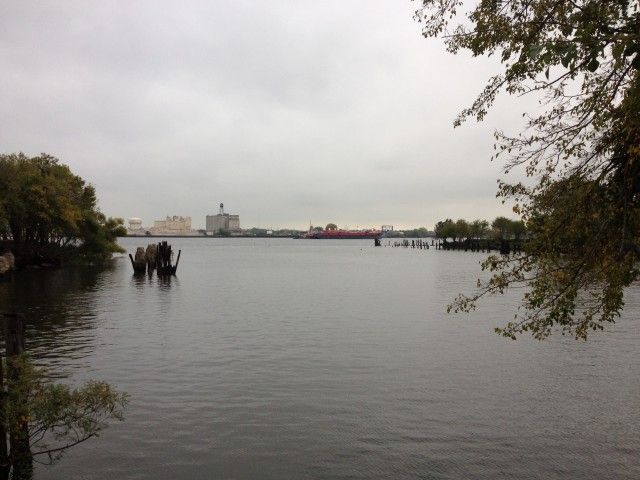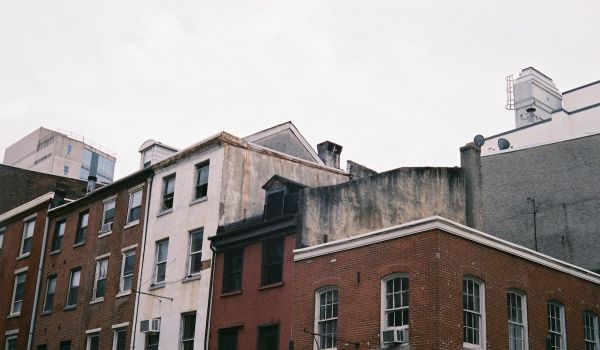Hurricane Sandy was a disaster not only for New Yorkers’ bodies and buildings. The super storm humbled the city, reminding residents and planners of the relative powerlessness of the American economic powerhouse in the face of furious wind, rain and floods.
In the soggy aftermath, conversations soon began shifting between immediate disaster response and plans for the next Big One. Some of the discussion has centered on hard infrastructure proposals, such as implementing levees, dams or dikes to block out floodwater.
But in the Metro section of Sunday’s New York Times, Alan Feuer reports on softer approaches to mitigating disasters. Rather than putting up walls between the city and the surrounding environment, some experts are proposing “soft infrastructure” changes — tools that work with natural processes to absorb, rather than inhibit, excess water.
What Feuer describes as “theoretically workable” plans for New York are already underway in Philadelphia. It was luck that the city largely avoided Sandy’s anticipated devastation and got off easier than New York. But in terms of absorption, Philly is already years ahead.
Philadelphia’s Green City, Clean Waters plan is the “largest green stormwater infrastructure program ever envisioned in this country,” according to a report by the Philadelphia Water Department. The city signed an agreement with the Environmental Protection Agency in April 2012, specifying that the program would “serve as a model for other municipalities seeking more sustainable solutions for urban wet weather pollution control.”
The $2.4 billion, 25-year plan strives to subvert the cycle of storms, flooding and pollution by greening at least one-third of the city’s currently impervious cover in the sewage system (9,564 acres).
Right now the sewage system cannot manage heavy rainfall, so in excessively wet periods sewers overflow directly into streams and rivers without treatment, carrying all the pollutants we’d rather not imagine. The water department asserts that greened streets, schools, parking lots, open spaces, homes, institutions and walkways should cut pollution by 80-90 percent per greened acre. Rather than pooling and polluting, greened acres will absorb and store water for reuse.
An image accompanying the Times article showed Lower Manhattan with a beard-like fringe of marshland reaching into the sea (“Marshy Edges, Absorptive Streets” read the article’s first heading). Architect Stephen Cassel’s firm Architecture Research Office is, along with a partner firm, working on designing a more resilient and absorbent New York. The marsh-beard is one imagined way of keeping storm surges at bay.
“When there’s a storm surge, it creates an enormous amount of energy,” Cassell is quoted as saying. “Wetlands absorb that energy and protect the coastline.”
Philadelphia is already sprouting a pubescent marsh-beard along the Delaware River with a pilot wetlands project, part of the Delaware River Waterfront Corporation’s master plan. One of the first tasks is Washington Avenue Green, located at Pier 53 at the junction of Washington and Columbus avenues in South Philadelphia. DRWC plans to link the picturesque reclaimed park space with piers farther south for an extensive length of wetlands. The plan specifies that the wetlands will “serve to protect urban and/or industrial areas to mitigate flooding events as well as future changes in river conditions.”
The Greenworks plan asserts that sustainable storm preparedness is cheaper than massive hard infrastructure projects. And New York’s $18 billion anticipated relief effort dwarfs Philly’s $2.4 billion dollar preparedness price tag.
Scientists don’t know when the next Big One will hit. But whether it’s an annual or a centennial event, massive storms have ever-more-pressing implications for cities. It may serve New York to look a little ways south for creative ideas to get ready for next time.

Allyn Gaestel is currently a Philadelphia Fellow for Next City. Much of her work centers on human rights, inequality and gender. She has worked in Haiti, India, Nepal, Mali, Senegal, Democratic Republic of Congo and the Bahamas for outlets including the Philadelphia Inquirer, the Los Angeles Times, Reuters, CNN and Al Jazeera. She tweets @allyngaestel.
















